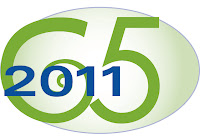I was sitting on our deck reading the Sunday papers, when my sister cleared her voice to get my attention. As I looked up, she was holding the back page of the first section of the
New York Times for me to see.
There was a beautiful full-page, full-color ad for the new
Apple iPad. Even though I was sitting on the opposite side of the deck, one glance told the entire story. You got the sense of an adult, cuddling a child on her lap; together they were reading Winnie the Pooh on what appeared to be an actual-size iPad.

The real beauty was that the center of focus was the storybook on the iPad screen, complete with illustrations of Pooh. All you saw of the people were their hands and feet. If you’d ever read to a child, or been read to as a child yourself, you could picture yourself there. “Wow,” I thought to myself. “There’s an ad that truly demonstrates storytelling P.O.W.E.R.™!”
At Gen-Sights, we work with marketers who are interested in connecting with the Boomer market and tapping into that generation’s $2 trillion in buying power. (“Who wouldn’t want to target an audience with that much potential,” you might ask?). One thing we stress with clients is that if you want to really connect with Boomers, you better tell them a story—the authentic, powerful story of your brand.
See, while it’s true that almost everyone loves a good story, thanks to changes in the way the mind works as people age, Boomer brains have become particularly receptive to information presented in an emotional, narrative style. To help companies understand how to translate this into their marketing communications, we’ve developed some tips for creating stories with
P.O.W.E.R.
P. for Perceptive: Become a perceptive marketer. Start by taking the time to truly understand the needs, wants, values, and concerns of your particular slice of the Boomer audience.
TIP: Not all Boomers think alike! Then look at the ways your product or service might align what you uncover. The insights you gain through this process can then be used to create a story that will resonate on a deep level with your target audience.
For instance, one perceived barrier to an electronic reader like the iPad is how it might affect the reading experience. In the Apple ad, you not only see that the book’s page, including type and illustration, is authentically reproduced, but the child’s hand is reaching out to turn that page. It’s a real ah-ha moment that demonstrates one can still enjoy the pleasurable elements of the traditional reading experience.
O. for Ownable: Whether you’re marketing a product or a service, the story you create has to represent your brand truth. Everyone from the CEO to the customer service rep to the guy driving the delivery truck has to feel like they own that story and equally important, are living it. The most valuable information you can give your customers are stories that demonstrate your real passion for what you do and the way you really do it.
With this iPad ad, Apple is hinting at the ways it might transform reading, much the way the company’s previous “i-”devices changed computing, listening to music, and using the phone.
W. for Win: Obviously, when the consumer buys your product, your business will win. But your brand story has to contain a win for the customer as well. Will your product make life better? Easier? More fulfilling? The story has to tell of the win that the consumer will enjoy, courtesy of your product.
To continue with the iPad analogy, the ad shows how the device, with its big screen, creates opportunities for sharing, just like a real book.
E. for Emotional: Sure, the features and benefits of your product or service are important, but can you describe them in a way that touches your target in an emotional fashion? Forget the fact sheet; talk instead about the compelling idea behind your business.
Apple could have run an ad that explained how many books the iPad holds, but instead they showed only a picture of a mother and child reading together. That says it all.
R. for Real: Forget fluff and hype. People today, especially Boomers, are hungering for real, authentic experiences that are relevant to their lives or the lives of the people they care about—and buy things for.
So does this mean the iPad is targeted to Boomers? Well, I for one could imagine a Boomer loading one up with beloved children’s books as a gift to a grandchild. (Maybe that’s how the mother in the ad got her iPad!) Or maybe Boomers buy one for their parents, so Mom or Dad can read books, watch movies (again that big screen), and surf the web without dealing with the complexity of a computer. Of course, when it comes to themselves, Boomers are surprisingly technologically savvy, love new things, especially if there is demonstrable value, so we’ll see how all those apps turn out. But one thing is for sure, at least with their iPad print ads, Apple seems to be telling Boomers a story with P.O.W.E.R.
– posted by Lynn Schweikart
photos captured from www.apple.com/ipad











































